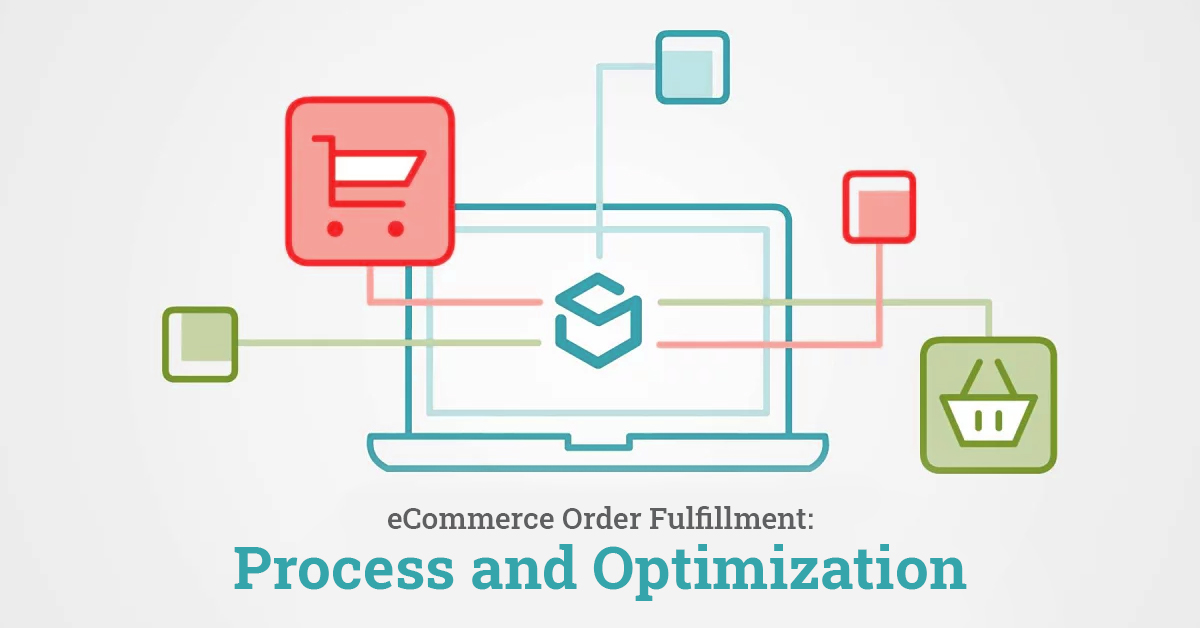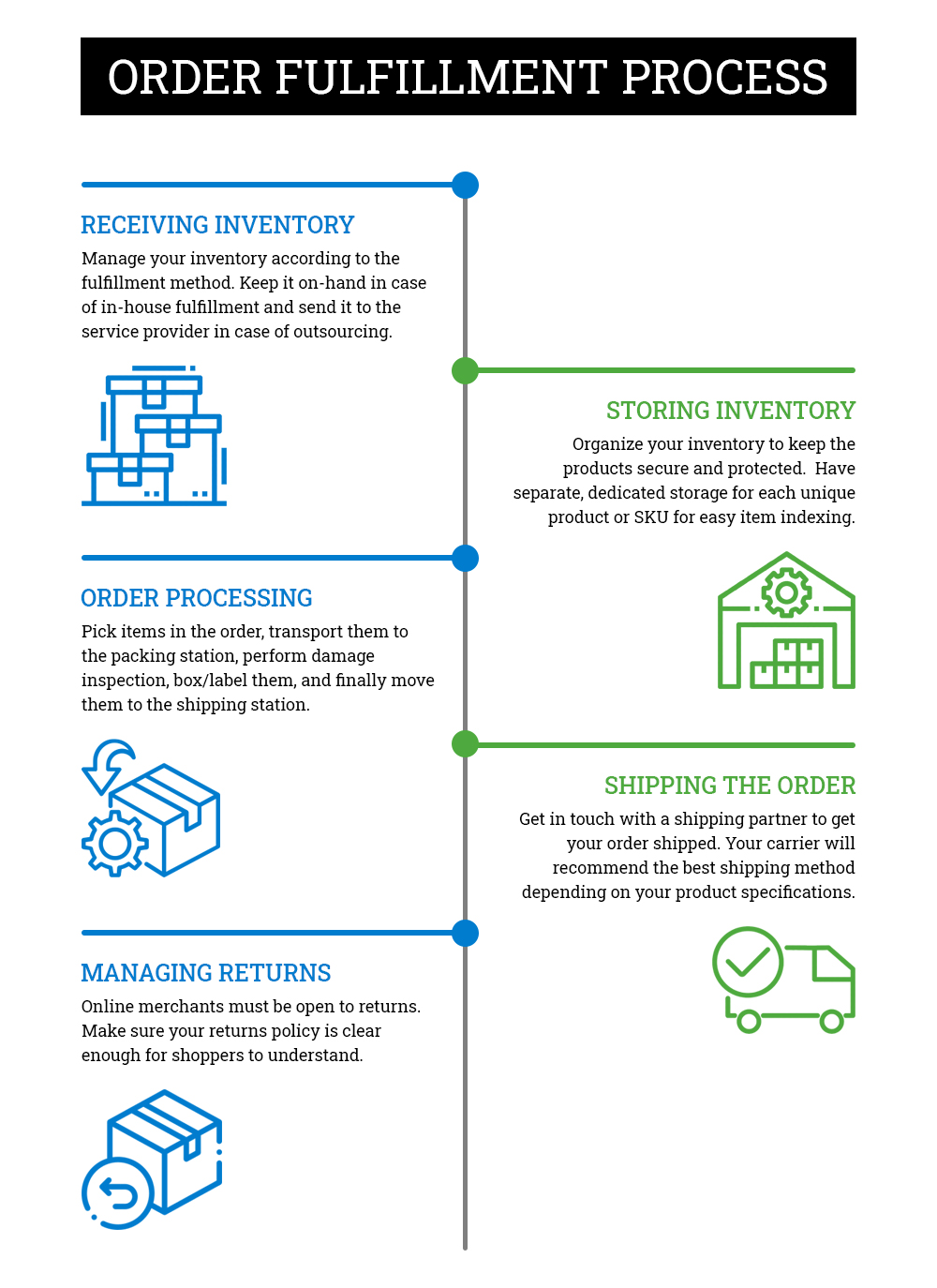
Customer expectations regarding order delivery and the cost of shipping are changing drastically, thanks to the retail giants like Amazon who offer same-day or one-day delivery. Consumers, today, want everything immediately. But what about sellers? How are they supposed to meet those demands? It’s a lot easier said than done.
Order fulfillment has got to be one of the factors that affect an online business’s bottom line – affecting both the customer experience and business operations. Let’s have a look at some stats before we move any further:
- According to a study conducted by Baymard Institute, 49% of shoppers abandon their cart if the extra costs (shipping, taxes, fees) are too high.
- More than 70% of consumers cite convenience and free shipping as their top reasons to shop online.
- As per PwC’s Global Consumer Insights Pulse Survey, 42% deem fast and reliable service as most important when shopping online.
- PwC’s Global Insights Pulse Survey also found that 41% of consumers are willing to pay a charge for same-day delivery while nearly 24% of shoppers said they would pay more to receive packages within a one-or two-hour window of their choosing.
Surprised? Well, that’s how the eCommerce world works, and you have to deal with it to stay relevant. By offering a fast and reliable shopping experience to your consumers, you can get hold of order processing and turn it into a revenue driver for your business. Let’s get you started with the basics first.
Order Fulfillment: The Overview
The entire concept of online selling can be described as order fulfillment. Confused? What we mean is, as a store owner you store your inventory, pick products and pack them to ship them to customers. This is what order fulfillment means.
Whether it’s B2B – where bulk quantity is sent to retailers – or B2C – where products are shipped to the customer directly, order fulfillment applies to both the orders. You can either perform the entire process of order fulfillment or processing in-house or outsource eCommerce order processing services to a third party.
Order Fulfillment: The Process
Order fulfillment is not as easy as it sounds. There are several steps involved, where each step has its own nuances.

1. Receiving Inventory
Order can’t be fulfilled or processed without an inventory. You must manage your inventory based on the fulfillment method you choose. For instance, if you are carrying out the fulfillment in-house (meaning you are responsible for taking stock, evaluating the condition of products, or labeling) your inventory must be on-hand. However, if you are outsourcing to a third party ecommerce product catalog management company, inventory must be sent to the service provider so that they can fulfill orders on your behalf.
2. Storing Inventory
Once inventory is received at the warehouse, the next step is to organize it to keep the products secure and protected. When doing fulfillment in-house, slotting the inventory and keeping a check on what items go in and out is essential to avoid any kind of delay in shipping. Have separate, dedicated storage for each unique product or SKU for easy item indexing.
3. Order Processing
This includes picking items in the order, transporting them to the packing station, performing damage inspection, boxing them/labeling them, and finally moving them to the shipping station. However, this step can be bypassed if you have decided to outsource eCommerce order processing services. You just have to pass through order requests to the partner and they will handle the rest.
4. Shipping the Order
At this stage, you must get in touch with a shipping partner and get your order shipped. Your carrier will recommend the best shipping method depending on the size, weight, and other specifications of your order while keeping you updated with the order status once it is shipped.
5. Managing Returns
As an online merchant, you must be open to returns. Shoppers are always on the look for stores that offer easy returns. Make sure your returns policy is clear enough for shoppers to understand.
Now that we have discussed the basics of order fulfillment and processing, it’s time to get your order fulfillment right with a few tips and tricks.
Also Read : How To Choose The Right Platform For Your eCommerce Website
Order Fulfillment Process Optimization Steps for your Ecommerce Store
1. Integrate with an Order Management System
No wonder, the majority of the businesses who sell online don’t manufacture the products themselves. Instead, the products come from different distributors, are packed and stored at a warehouse, and finally shipped to the end customers.
However, you need to effectively manage the entire process by having real-time information on the moving parts. This is where an order management system (OMS) comes into play. It helps you in maintaining easy communication between the suppliers and logistics partners. Thus, as soon as you receive a new customer order, your warehouse staff can be instantly notified and start off with order processing without any delay.
2. End-to-End Order Visibility
When you integrate an OMS, you not only bridge the gap between suppliers and the warehouse but create visibility across your supply chain as well. It provides real-time information, to both you and your suppliers, regarding the products that are ordered, stock levels, and order status for you to be updated at all times.
Further, this information can also be shared with your customers so that they can track their orders and know the exact status. Resultantly, you can enhance end-to-end order visibility and ultimately an effective order processing process.
3. Enhance Customer Communication
Once customers have ordered from you, they need to know their order status at all times. It shouldn’t be limited to sending a ‘thank you for ordering with us’ or for that matter ‘rate your experience’.
Instead, you must convey to them the status of their order as soon as they place it. You must also allow them to contact you in case of any order-related queries. You may consider outsourcing Online Customer Support Services to professionals that guarantee customer satisfaction. By maintaining a transparent and clear communication process, you end up enhancing customer experience and achieving a high customer satisfaction rate.
4. Manage Returns Effectively
Returns and exchanges are no big deal when it comes to online businesses to the extent where customers’ purchase decision depends on whether the store offers them easy return/exchange. Make sure you provide your customers with the same. Develop a clear return/exchange/refund policy to avoid any kind of confusion later. Additionally, you must make sure to work with suppliers who are open to returns without charging any kind of restocking fees.
5. Offer Express and Free Shipping
Your job isn’t limited to storing products or moving them to the warehouse. In fact, the real job is to ensure that the products are delivered to the concerned customers on time, in budget. Customers, today, want fast delivery, that too at minimum or negligible costs.
Try providing free shipping, especially for products that are expensive. Else, create product bundles or set a minimum spend limit on purchases for free delivery, for instance, you can provide free shipping on orders that are 10$ or above. In both cases, express or two-day delivery can be offered for maximum customer satisfaction.
6. Improve Inventory Accuracy
Keeping an exact count of your products or being updated with the exact stock levels is crucial so that you never run out of products. Consider setting a limit after which a notification is automatically sent to your suppliers asking them to restock.
An electronic data interchange (EDI) can prove to be extremely helpful here as it will convey real-time inventory levels to your suppliers. You could also use the purchase order acknowledgment document to ensure inventory is updated and accurate. Resultantly, your customers or suppliers won’t have to face any delays in order delivery as well as dispatch.
7. Staff Training
In order to make the most of your business, you need to make sure that your staff is enough to perform all the duties effectively. Whether they are handling shipping, managing inventory, or providing eCommerce virtual assistant support, they must have a clear understanding of their duties and perform them with utmost perfection.
As a result, you are bound to experience greater productivity levels and ultimately higher revenue as well as customer satisfaction rates.
This shouldn’t only apply for new hirings but the existing staff as well. Try conducting regular training so that the entire team is updated.
Benefits of Outsourcing Order Fulfillment
Outsourcing order fulfillment to a third party is handling them everything from shipping to inventory management to packing and whatever comes in between. Besides this, you can leverage a number of benefits such as:
- Focusing on Core Business Activities: When you rely on a third-party service provider, they take the load off your shoulders while saving you time to focus on your core business areas. Further, they help you in scaling your business by meeting changing needs and demand, especially in times when demand is high and you might be running out of supplies.
- No Need to Manage Warehouse or Train Staff: Managing warehouse operations eats up a major chunk of your time. In fact, you also need storage space, purchase machinery, and most of all hire and train employees. When you outsource, you save yourself from all these hassles since the service partner handles everything for you.
- Get Access to Top Expertise: When you partner with an outsourcing partner, you get access to the top talent who use the latest industry best practices and help you optimize your shipping and handling operations.
- Offer Cost-Effective and Fast Shipping: Managing the warehouse operations internally not just results in higher shipping fees but consumes more time in delivering goods. When you hire experts you can provide express or fast shipping and fulfill orders cost-effectively from different locations.
Outsource Order Processing to Data4ecom
Order processing plays a pivotal role in the success of your eCommerce business, and we understand that well. Our experts handle everything from managing your inventory to validating and authenticating your orders to streamlining payment processing and everything that comes in between. Outsource eCommerce order processing services to us and let our experts do the rest.


